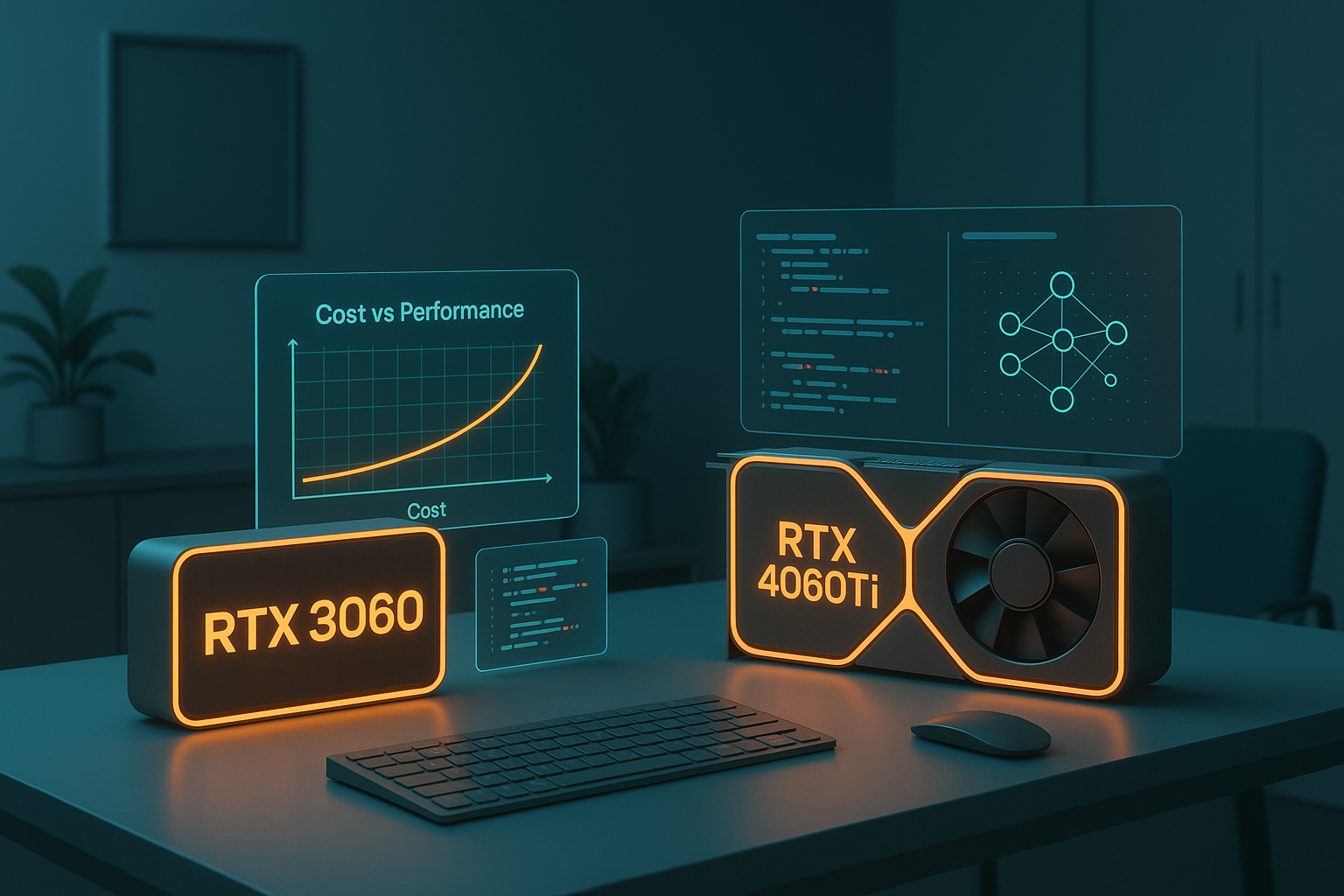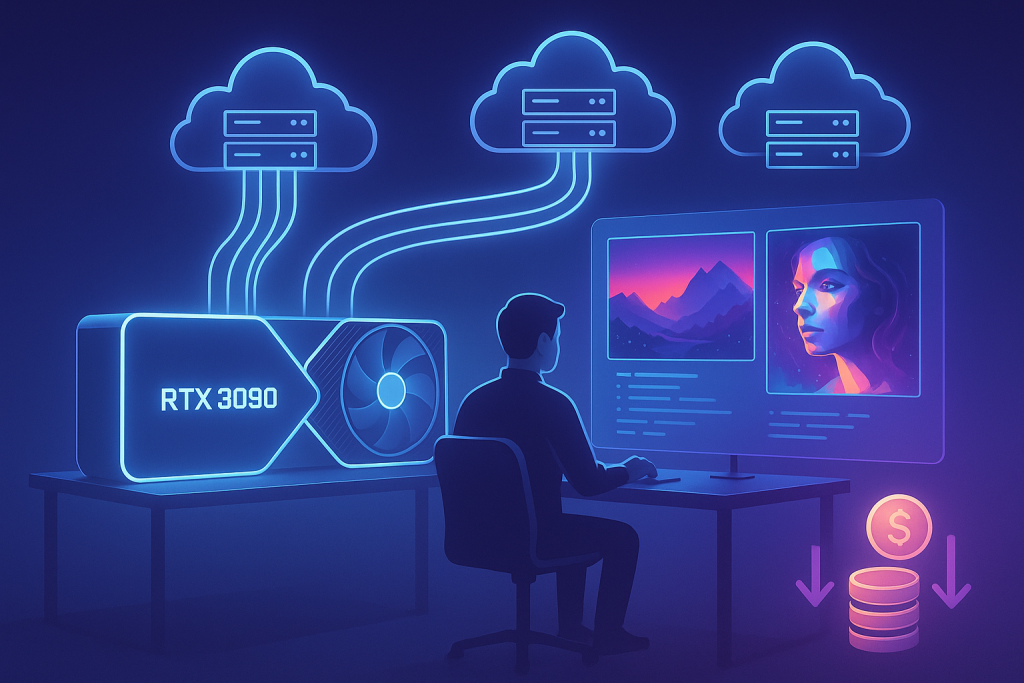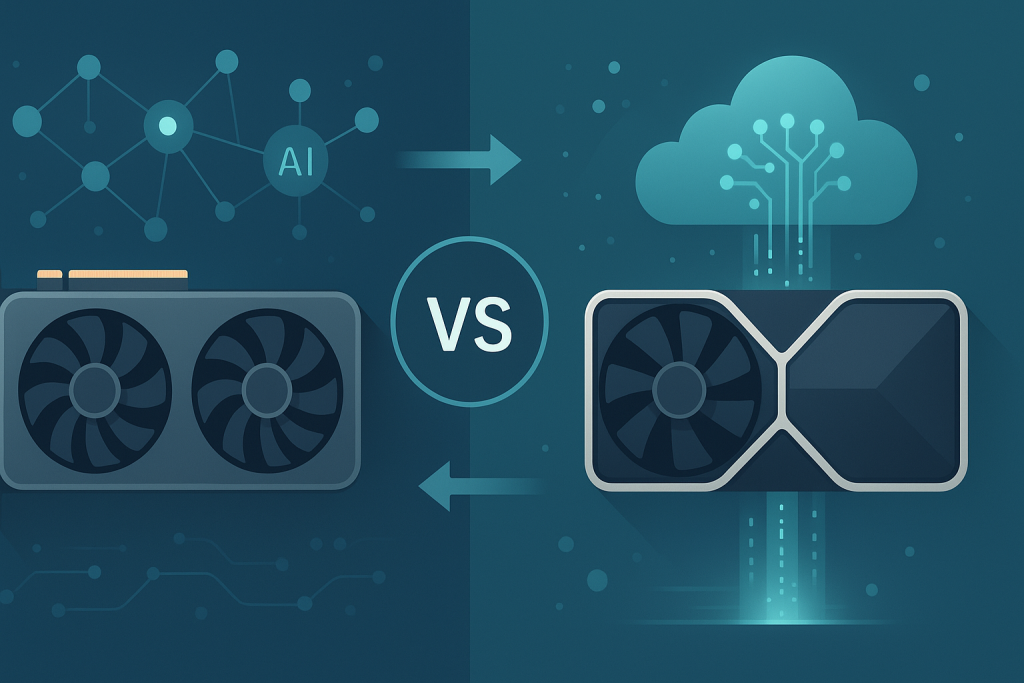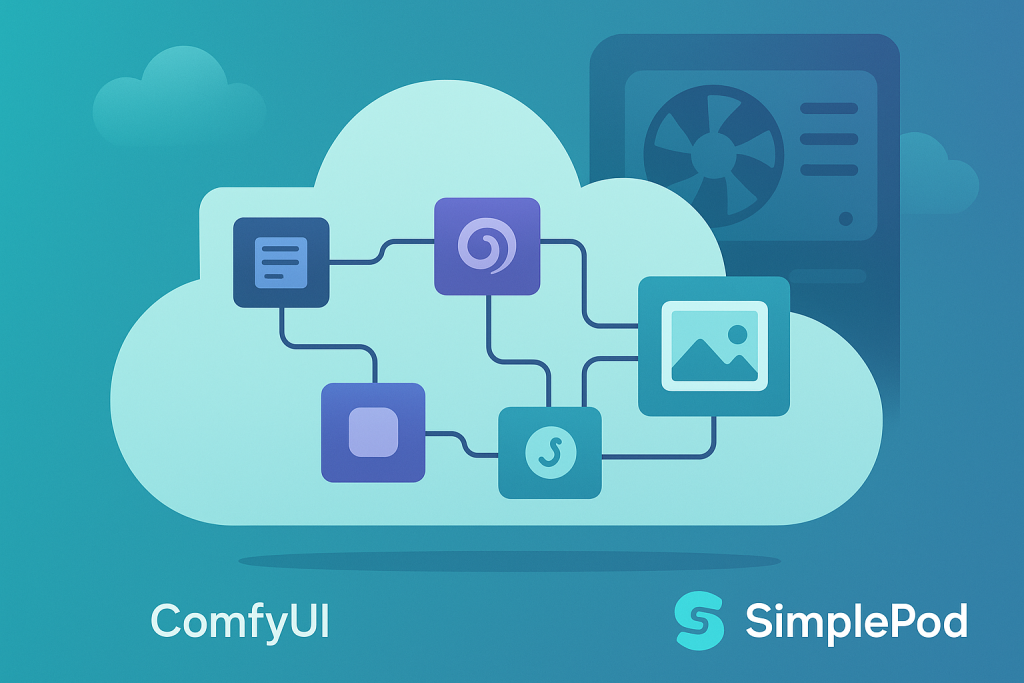Introduction
If you’re a solo developer, small startup, or research student, you’ve probably hit the same wall: how to train or fine-tune AI models without draining your budget.
On SimplePod, GPUs like the RTX 4060 Ti and RTX 3060 offer the perfect middle ground — affordable yet powerful enough for serious work.
In this post, we’ll look at how to squeeze maximum performance and minimum cost out of these cards — covering quantization, mixed precision, batching, and smart session management.
Why 3060 & 4060 Ti Are Perfect for Small-Scale AI
Both GPUs hit the sweet spot for developers who want speed without overpaying.
- RTX 3060: 12 GB VRAM — great for compact models, smaller fine-tunes, or inference APIs.
- RTX 4060 Ti: 16 GB VRAM — newer architecture, better efficiency, and faster throughput per watt.
You won’t train a 70-billion-parameter LLM on these, but you can absolutely fine-tune small to mid-range models, generate images, or serve inference endpoints reliably.
💡 Think of these cards as your agile “test bench” — perfect for fast experiments before scaling to a 4090.
1. Use Quantization to Fit More Models
Quantization reduces the precision of model weights (for example, from 16-bit floats to 8-bit integers) — drastically cutting VRAM usage and speeding up inference.
- Tools: Try
bitsandbytesortransformersintegration withload_in_8bit=True. - Benefit: Models like Mistral 7B or LLaMA 2 7B can fit comfortably within 12–16 GB VRAM.
- Result: Up to 40–60% lower memory footprint and faster response times.
💡 Use quantized versions of open-weight models for chatbots or API demos without sacrificing too much accuracy.
2. Mixed Precision: FP16 and FP8 for Speed
Modern GPUs, including the 4060 Ti, support mixed-precision training — using lower bit formats like FP16 or FP8 where possible.
This can:
- Cut memory usage by up to 50%,
- Increase throughput 1.5–2×,
- Reduce training instability when combined with gradient scaling.
In PyTorch, it’s as simple as:
with torch.autocast("cuda", dtype=torch.float16):
output = model(input)
💬 The key is balance: use FP16 for training stability, FP8 for lightweight inference.
3. Batch Smartly
Batching lets you process multiple inputs at once, which dramatically improves GPU utilization.
On SimplePod:
- Try batch sizes of 4–16 for inference jobs.
- Monitor VRAM usage in your Jupyter environment or through the SimplePod dashboard.
- Use dynamic batching for APIs — frameworks like FastAPI or vLLM handle this automatically.
💡 Bigger batches = fewer kernel launches = better GPU efficiency.
Just remember: too big, and you’ll hit out-of-memory errors. Find your “sweet spot” experimentally.
4. Stop Idle Instances (Seriously!)
The easiest cost optimization trick? Don’t let your GPUs sit idle.
On SimplePod:
- Always stop instances when you’re not actively training or serving.
- Set up auto-shutdown policies for long-running notebooks.
- Check your dashboard — if GPU utilization drops below 10% for long periods, pause it.
💬 Even a $0.05/hour instance adds up when left running all weekend.
5. Cache, Reuse, and Resume
Re-downloading model weights every time you start a session wastes both bandwidth and time.
Use:
- Persistent volumes on SimplePod to store checkpoints and datasets.
- Hugging Face’s built-in caching (
~/.cache/huggingface). - Checkpoint saving every N steps to resume interrupted fine-tunes efficiently.
💡 Caching isn’t just convenience — it saves both startup time and money.
Performance Snapshot
| GPU | VRAM | Best For | Key Tricks |
|---|---|---|---|
| RTX 3060 | 12 GB | Lightweight inference, small fine-tunes | Quantization, FP16 |
| RTX 4060 Ti | 16 GB | Diffusion, small LLMs, multi-model APIs | FP16/FP8, batching, caching |
Who Benefits Most
| User Type | Why It Fits |
|---|---|
| Solo Developers | Can fine-tune models under $1/hour while testing APIs or demos. |
| Early-Stage Startups | Ideal for MVPs, testing product pipelines, and deploying pilot versions. |
| Researchers / Educators | Low cost of experimentation with enough performance for meaningful projects. |
Conclusion
You don’t need enterprise GPUs to do meaningful AI work.
With smart optimization techniques — quantization, FP16/FP8, efficient batching, and auto-shutdown policies — the RTX 3060 and 4060 Ti on SimplePod deliver incredible performance-per-dollar.
For startups and solo devs, these cards let you experiment, iterate, and build without burning your compute budget.
Scale when you’re ready — but start lean, start fast, and make every GPU hour count.




